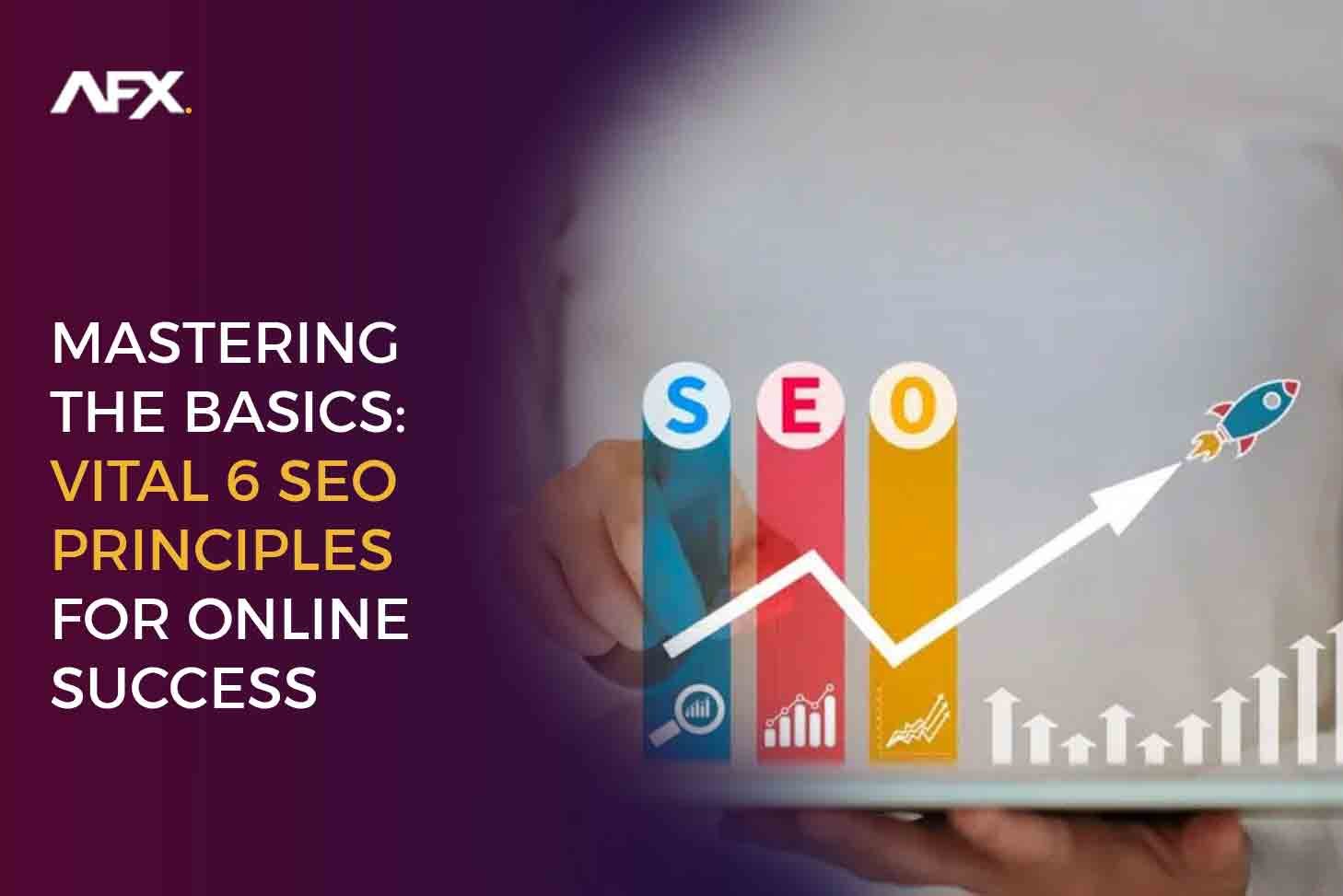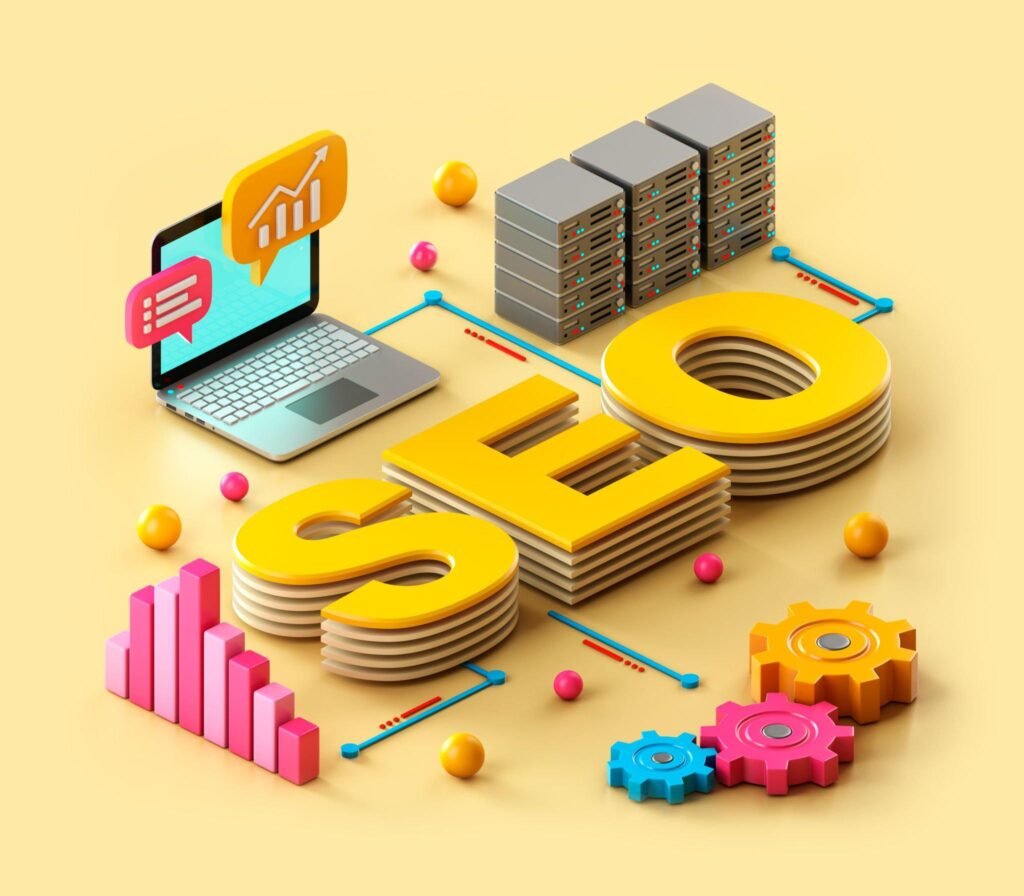- Amelia
- 0 Comments
- 1198 Views
A solid online presence is essential for the survival and growth of any organization in today’s hyper-connected digital economy. In this regard, search engine optimization (SEO) is a powerful tool. However, many people find it difficult to make sense of the different principles of SEO, such as technical SEO, on-page SEO, off-page SEO, and content. This article aims to fill that need by providing information that is accessible to readers of varying academic backgrounds.
Anyone who owns a small business and wants more traffic to their site or who works in marketing and wants better search engine optimization can benefit from this. In this article, the basic principles of SEO are broken down to provide you with specific guidance and examples that you can implement in your business right away.
Your website’s search engine rankings, traffic, and conversion rates can all be improved by following the SEO concepts outlined in this article, which you will have mastered by the time you reach the conclusion.
Engage yourselves, for we’re about to start up!
What’s The Big Deal About Search Engine Optimization?
Let’s pretend you run an online shoe store. Your website ranks on the first page of Google when potential customers type “running shoes” into the search bar. The photos on your website are fuzzy, the text is jumbled, the navigation is clumsy, and it takes forever for the page to load.
The visitor, frustrated, hits the back button and visits a competing website that was designed to convert visitors into buyers.
In this case, you’ve lost a possible client and a sale.
But if you had optimized your website’s load time and mobile responsiveness, the images would have been crisp, the text would have been legible, and the navigation would have been smooth. If the buyer hadn’t left, they likely would have continued browsing your site and eventually bought anything. In addition, Google would have taken note of the improved user experience and promoted your site accordingly.
Therefore, SEO services that optimize website speed and mobile responsiveness are crucial for improving
- User experience
- Increasing conversions
- improving search engine ranking
SEO’s Big 6 Focus Areas
Getting a firm grasp on the basics of search engine optimization, specifically, these are crucial to the success of any campaign.
- Technical SEO
- Content SEO
- On-Page SEO
- Off-Site SEO
- Mobile SEO
- Analytics and Reporting
Now you’ll get to know each SEO principal and all the qualities that make them up better as you read on further.
-
Technical SEO
When discussing how a website’s search engine rankings are affected, the term “technical SEO” is typically used. It consists of things like the robots.txt file, an XML sitemap, meta directives, HTTPS, a responsive design, and quick load times.
-
Robot.txt
In order to instruct search engines as to which parts of your site they should and should not crawl, you can use a text file called robots.txt. Avoiding indexing of duplicate material or sites is crucial for maintaining high search engine rankings.
-
XML Sitemap
A file called an XML sitemap can help search engines better crawl and index your website’s pages.
-
Meta Directives
HTML elements like meta titles and meta descriptions are examples of meta directives because they describe the page’s content. They are essential for search engine optimization as they provide context for search engines and boost engagement.
-
Secure HTTP
Hypertext Transfer Protocol Secure (HTTPS) is a crucial security feature that encrypts information exchanged between a user’s browser and a website’s server, keeping sensitive data safe from hackers.
-
Core Web Vitals
When a website is optimized for what Google calls “Core Web Vitals,” it can see an increase in both its user experience and its search engine rankings. It evaluates a website’s usability based on three criteria:
- Loading speed
- Interactivity
- Visual stability
Among these measures are:
-
Largest Contentful Paint (LCP)
It evaluates how quickly the page’s primary content loads. For a positive user experience, Google suggests keeping the LCP to under 2.5 seconds.
-
First Input Delay (FID)
Checks how engaging a website is for its visitors. This metric measures how long it takes for a webpage to respond to an action taken by the user, such as pressing a button. For a positive user experience, Google suggests keeping the FID below 100 ms.
-
Cumulative Layout Shift (CLS)
Evaluates how well a website maintains its visual integrity. This measure tracks how much a page’s content changes position while it loads. A CLS score of less than 0.1 is considered ideal by Google.
Content SEO
Now that we have set up technical SEO, search engines will be able to crawl and index your content. The contents of each page are what the reader encounters.
Since search engines want to provide their users with the most relevant and high-quality content possible, search engine optimization for content is a crucial part of any SEO strategy. Therefore, it is critical to produce content that answers user questions and adds value. Blog posts, articles, movies, infographics, and other media are just some examples of the many formats content can take.
Similarly, search engines place importance on producing relevant, high-quality results for users. Your content’s search engine rankings are affected by factors such as its quality, keywords, recency, type, and relevance.
-
Quality
Superior articles help readers and address their concerns. It needs to be professionally written, interesting, and informative.
-
Keywords Research
Search engines rely on keywords, or specific words or phrases, to help users locate the most relevant results. They should be dispersed evenly throughout the text to assist search engines identify important concepts.
Researching user intent is crucial when selecting keywords.
You need to do keyword research and analyze search queries to figure out what your target audience is looking for in order to optimize your content for user intent.
When it comes to search engine optimization, knowing your audience’s intent can help you produce content that more closely satisfies their wants and expectations. User intent can be divided into four categories:
-
Informational Intent
The user wishes to learn more about a particular subject.
-
Navigational Intent
The searcher is on the lookout for a particular online resource.
-
Transactional Intent
The user has certain goals in mind, such as making a purchase or signing up for a service.
-
Commercial Intent
Users are really considering a purchase in the near future and are doing their research online. These individuals also have transactional intent, but they require additional time and convincing.
-
Recency
Search engine rankings can be improved by regularly updating or adding new material to your website.
-
Type
Blog posts, videos, infographics, and podcasts are just a few examples of the many forms of information that may be used to increase interaction.
-
Relevancy
The content you create must be tailored to both your ideal client and the industry in which you operate. Making material that answers consumers’ questions might boost its visibility in search results.
-
Content Promotion
Promoting your content to broaden its exposure is the last step in search engine optimization for written material. Social media promotion, influencer, and blog outreach, and paid advertising are all ways to increase the content’s reach.
On-Page SEO
On-Page Search Engine Optimization is the process of fine-tuning individual web pages to get higher organic search results placement. Structured data incorporates elements like page titles, meta descriptions, headings, alternative text, internal links, and more.
-
Page Title
An HTML element called “page title” gives a concise summary of the page’s subject matter. To increase your page’s visibility in search engines, it’s crucial to use pertinent keywords in the title.
-
Meta Description
A meta description is a short description of a page that is displayed in search engine results. Meta descriptions need to be written in a way that makes people want to click through to your website.
-
Headings
HTML headings (H1, H2, H3, etc.) help visitors and search engines better grasp the hierarchy of a page’s content.
-
Alt. Text
Alt text is a short description of a picture that is shown in place of the image itself if it cannot be viewed. If you want to increase your search engine rankings, the alt text on your images must contain keywords.
-
Internal Links
A website’s internal links are the linkages between its own pages. They aid visitors in navigating your site and spread link equity across your pages, which can boost your site’s position in search results.
-
Structured Data
Structured data is coding that helps search engines better understand and index a page’s content. It can help your website rank higher in search engine results and provide a better overall user experience.
Off-Site SEO
To improve your website’s search engine ranks, you should also focus on off-site optimization. Link building, local search engine optimization, and social media optimization are all a part of it.
-
Link Building
Building backlinks is soliciting links from other sites to your own. Search engines consider backlinks as a proxy for the quality and usefulness of a website, making them an integral part of search engine optimization.
-
Local Search
Website and local directory optimization is a part of local search engine optimization. Google My Business listings, local citations, and client reviews are all a part of this.
-
Social Media Optimization
If you want to rise to the top of search engine results pages, you need to optimize your social media profiles and content. It involves things like making content that people want to talk about, expanding your online network, and interacting with your target audience.
Mobile SEO
To put it simply, mobile SEO among the basic principles of SEO is the method by which your website is made more accessible on mobile devices. The percentage of internet traffic coming from mobile devices is growing, thus it’s crucial that your site be optimized for use on mobile devices. Websites that are optimized for mobile devices tend to rank higher in Google’s mobile search results because Google places a premium on mobile-friendliness as a ranking criterion.
When optimizing for mobile devices, it’s important to keep in mind the following:
-
Responsive Design
Creating a website that works well on a wide range of display sizes and resolutions.
-
Page Speed
Increasing the website’s responsiveness to mobile users.
-
Usability
Creating a mobile-friendly website that works well on all devices.
Analytics And Reporting
The reliability of your reports is crucial to the success of any SEO strategy.
How can you expect to make the precise adjustments in your SEO strategy, if you can’t report on the results that the campaign achieves?
However, a quarterly or even bi-monthly keyword research effort included in your SEO principles process may be necessary so that you know exactly what consumers are searching for next if you work in a dynamic business with a constantly shifting market.
By doing so, you may make the necessary adjustments and, eventually, identify the next major trend in your market or business.
Search engine optimization (SEO) is the process of increasing a website’s visibility in search engine results pages by the use of techniques such as keyword research, backlink building, and content creation. Important indicators to keep an eye on include:
-
Organic Traffic
The percentage of site visitors who found you in a search engine.
-
Bounce Rate
The rate at which people visit only one page of your website before clicking away.
-
Conversion Rate
The fraction of site visitors who do the intended action, such as buying something or contacting you.
Related: Proven methods: How to track SEO ranking for enhanced performance
Related: What is technical SEO? Basics and 10 best practice
Related: Follow these SEO examples for inspiration and to stay ahead of the curve
Conclusion
In conclusion, search engine optimization (SEO) is a cornerstone of every fruitful digital marketing strategy, and mastery of its basic SEO principles is critical to realizing the goals of your business. You may raise your website’s exposure, traffic, and conversions by adopting local SEO services providing technical SEO, on-page SEO, off-page SEO, content SEO, mobile SEO, and analytics report. Don’t wait any longer to implement these SEO strategies into your company’s plan and watch your internet visibility grow like never before.







